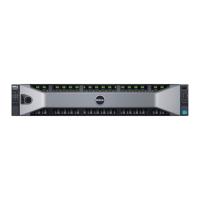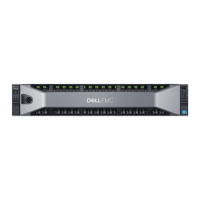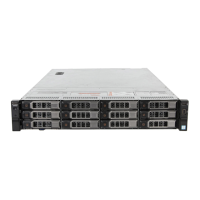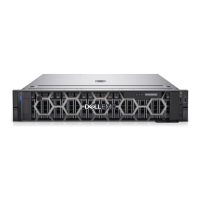26 PowerEdge R730 and R730xd Technical Guide
Table 11. Memory populations and operating frequencies
DIMM populated per
channel
Operating frequency (MT/s)
Maximum DIMM ranks per
channel
For more information on memory configuration and population, see the
Dell PowerEdge R730 and
R730xd Owner’s Manual
on Dell.com/Support/Manuals.
Memory RAS features
Reliability, availability, and serviceability (RAS) features help keep the system online and operational
without significant impact to performance, and can decrease data loss and crashing due to errors.
RAS aids in rapid, accurate diagnosis of faults which require service. Table 12 describes the memory
RAS features supported on the R730 and R730xd.
Table 12. Memory RAS features
Dense configuration
optimized profile
Increased memory reliability can be a result from this selectable platform profile
that adjusts parameters to reduce faults regarding refresh rates, speed,
temperature and voltage
Memory demand and
patrol scrubbing
Demand scrubbing is the ability to write corrected data back to the memory once
a correctable error is detected on a read transaction. Patrol scrubbing proactively
searches the system memory, repairing correctable errors.
Recovery from single
DRAM device failure
Recovery from Single DRAM Device Failure (SDDC) provides error checking and
correction that protects against any single memory chip failure as well as multi-bit
errors from any portion of a single memory chip.
This feature provides the ability to identify a specific failing DIMM channel pair,
thereby enabling the user to replace only the failed DIMM pair.
Memory mirroring:
intra-socket
Memory mirroring is a method of keeping a duplicate (secondary or mirrored)
copy of the contents of memory as a redundant backup for use if the primary
memory fails. The mirrored copy of the memory is stored in memory of the same
processor socket.
Memory address parity
protection
This feature provides the ability to detect transient errors on the address lines of
the DDR channel.

